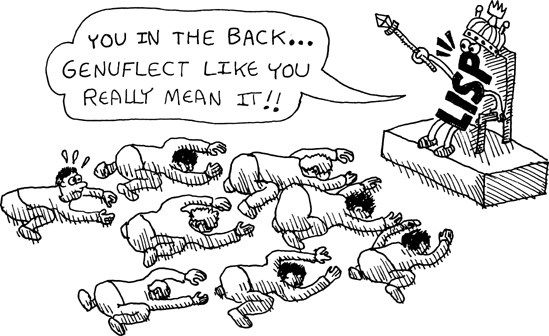Conrad Barski M.D - Land of Lisp: learn to program in Lisp, one game at a time!
Here you can read online Conrad Barski M.D - Land of Lisp: learn to program in Lisp, one game at a time! full text of the book (entire story) in english for free. Download pdf and epub, get meaning, cover and reviews about this ebook. year: 2010, publisher: No Starch Press, genre: Home and family. Description of the work, (preface) as well as reviews are available. Best literature library LitArk.com created for fans of good reading and offers a wide selection of genres:
Romance novel
Science fiction
Adventure
Detective
Science
History
Home and family
Prose
Art
Politics
Computer
Non-fiction
Religion
Business
Children
Humor
Choose a favorite category and find really read worthwhile books. Enjoy immersion in the world of imagination, feel the emotions of the characters or learn something new for yourself, make an fascinating discovery.

- Book:Land of Lisp: learn to program in Lisp, one game at a time!
- Author:
- Publisher:No Starch Press
- Genre:
- Year:2010
- Rating:5 / 5
- Favourites:Add to favourites
- Your mark:
Land of Lisp: learn to program in Lisp, one game at a time!: summary, description and annotation
We offer to read an annotation, description, summary or preface (depends on what the author of the book "Land of Lisp: learn to program in Lisp, one game at a time!" wrote himself). If you haven't found the necessary information about the book — write in the comments, we will try to find it.
Lisp is a uniquely powerful programming language that, despite its academic reputation, is actually very practical. Land of Lisp brings the language into the real world, teaching readers Lisp by showing them how to write several complete Lisp-based games, including a text adventure, an evolution simulation, and a robot battle. While building these games, readers learn the core concepts of Lisp programming, such as recursion, input/output, object-oriented programming, and macros. And thanks to Lisps powerful syntax, the example code is short and easy to understand. The book is filled with the authors brilliant Lisp cartoons, which are sure to appeal to many Lisp fans and, in the tradition of all No Starch Press titles, make learning more fun.
Conrad Barski M.D: author's other books
Who wrote Land of Lisp: learn to program in Lisp, one game at a time!? Find out the surname, the name of the author of the book and a list of all author's works by series.











